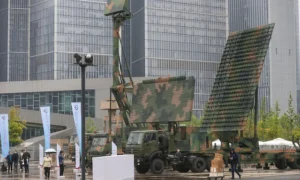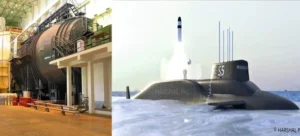Source : News18
 |
| Representative Image |
The sickle Red hammer flag was lowered, signalling the fall of the mammoth, iron wall country, the Union of Soviet Socialist Republics (USSR). The USSR was weakened by the Western world’s constant pressure to push the USSR into democracy. The tricolour Russian flag was hoisted, reducing the power of the USSR to minimum, and the Russian country had come under the significant influence of the United States of America (USA).
India was rapidly improving in the Space Research Programme and on January 18, 1991, the Indian Space Research Organisation (ISRO) entered into an agreement with the Russian Space Agency Glavkosmos for technology transfer of “cryogenic engine”, which powered heavy rockets with cheaper fuel cost.
The USA was watching India’s progress on space research and was constantly gathering information about ISRO’s future plans. India had already developed ballistic missile AGNI. The US was suspecting that technology transfer of cryogenic engine will power up India and make it a super power in rocket and satellite launching programme.
India was the only developing country with heavy lift ambitions and its ultra-low cost model could one day put the likes of National Aeronautics and Space Administration (NASA) out of business. Fearing that eventuality, the United States wanted to delay India’s space programme for as long as it could.
CRYOGENIC ENGINE
India was constantly on the lookout for fuel that could be light in weight and energy-efficient.
The cryogenic engine was the only answer, as it used hydrogen and oxygen in liquid form under high pressure to lift off heavy rockets and was also fuel efficient.
Author and broadcaster Brian Harvey wrote in his exhaustively researched book, ‘Russia in Space: The Failed Frontier’, that in the late 1980s, India was looking to develop a massive rocket to launch satellites into the 24-hour orbit. India first talked to Japan, but nothing came of it. Hearing of these overtures, Indians were approached first by General Dynamics Corporation, which offered an American engine. But the cost was prohibitive as was an offer shortly thereafter from Europe’s Arianespace.
“Just then a third approach came, this time from the Soviet Union, offering two engines and technology transfer for the more reasonable price of $200 million,” wrote Harvey.
The Russians were offering a secret engine, the RD-56 or KVD-1, built by the Isayev Design Bureau. The KVD-1 had unsurpassed thrust and capabilities and NASA had nothing that could match the Russian engine for years. In fact, the rocket engine was originally developed as part of the Soviet manned moon landing programme as far back as 1964.
On January 18, 1991, ISRO entered into an agreement with Glavkosmos for technology transfer of cryogenic engine.
THE PLAN B
Hence, ISRO and Glavkosmos were ready with Plan B. According to this, Glavkosmos would outsource the manufacturing of its cryogenic engine to Kerala Hi-tech Industries Limited (KELTEC), so that the technology would be available to India by this arrangement.
Aleksey Vasin, officer-in-charge of cryogenic technology in Glavkosmos, and ISRO chairman UR Rao believed that if Russian cryogenic technology was passed on to ISRO via KELTEC, technically it would not be a violation of the MTCR.
As expected in May 1992, the US slapped sanctions on ISRO and Glavkosmos, alleging the arrangement was in violation of MTCR.
India also pointed out that Americans had offered them the very same technology and had made no objections throughout the years 1988-92 when the arrangements had begun. So does that mean the Americans were trying to achieve the dual aim of crippling both the Indian and Russian space programmes? It was too obvious.
India and Russia said that the cryogenic engine technology was being used purely for scientific purpose and not to be used in the missile. They invited the MTCR to inspect the technology arrangements.
Former US President Bill Clinton and wife Hillary are for some inexplicable reason considered friends of India. It was under President Clinton that Russia went back on its proposals to transfer technology to India and suspended its agreement, invoking force majeure (circumstances beyond its control).
THE REVISED AGREEMENT
No blueprints were to be given to India.
But the Glavkomos scientists decided to help ISRO scientists.
THRILLER BEGINS
So ISRO entered into an agreement with Russia’s Ural Airlines, which was ready to take the risk for a little extra money. Harvey further wrote: “The appropriate documents, instruments and equipment were allegedly transferred in four shipments from Moscow to Delhi on covert flights by Ural Airlines. As a cover, they used ‘legitimate’ transhipments of Indian aircraft technology travelling the other way to Moscow for testing in Russian wind-tunnels.”
This was confirmed by cryogenic team leader Nambi Narayanan who told the Indian media he was on board the flights that transported the technology to India.
By this time, the US had realised that further arm-twisting would not do any good and decided to try other means to scuttle the space programme of India, as it would be a direct threat to NASA’s business opportunity.
Narayanan had become a household name by then as he was interviewed by almost all international, national and regional TV channels and other media. He was the in-charge of the cryogenic engine technology with his deputy Sasi Kumaran.
The Central Intelligence Agency (CIA) was entrusted the work of aborting India’s ISRO’s cryogenic engine dream.
Narayanan, being an important cog in the wheel, was arrested and tortured by the Kerala Police and the Intelligence Bureau (IB). He was alleged to have sold important military information through 2 Maldivian women he had never met.
The first hint there was a foreign hand trying to destroy – or at the very least slow down – India’s space programme surfaced in 1997, when five leading scientists – Satish Dhawan, UR Rao, Yashpal, Rodham Narasimha and K. Chandrasekhar, along with former Chief Election Commissioner TN Seshan, wrote a joint letter to the government, saying the espionage charges against Narayanan and Kumaran were fabricated.
These were public figures who clearly knew a thing or two about the inner workings of ISRO and the law and order system. Despite their plea, the IB tortured Narayanan to get him to implicate the higher-ups at ISRO. If Narayanan had cracked and acquiesced, perhaps, the entire organisation would have collapsed.
It is a measure of how successful the CIA was in this spy game that its agents in the Kerala Police and IB were able to have a swing at just about everyone in the cryogenic project, wrote Rajasekaran Nair.
By removing the important man from the project, the USA had successfully scuttled the dream of ISRO and India.
THE CLEAN CHIT
With no choice but to take the indigenous route, ISRO successfully developed the cryogenic engine and started to launch several Geosynchronous Satellite Launch Vehicle (GSLV) rockets and put Indian and several other countries’ satellites into the orbit at a fraction of NASA’s cost, which is what the US had feared.
India also sent a vehicle to Mars at one-fourth the cost and that too in its maiden attempt, compared to USA’s several attempts.
After meeting tough challenges, India’s ISRO has now emerged as one of the world’s largest space organisations.







